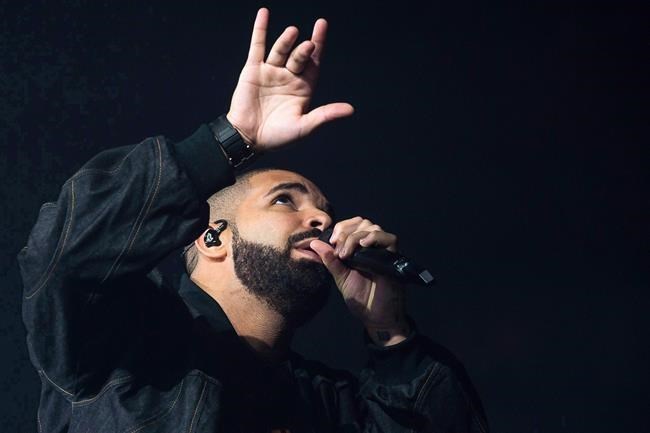TORONTO — The ongoing battle between Drake and Kendrick Lamar is playing out in superspeed on social media platforms and streaming services, exemplifying how modern technology amplifies and accelerates the competition at the heart of hip-hop culture.
"It's a high-profile beef with two of the arguably top four rap talents," said Dalton Higgins, who wrote a biography of Drake and teaches a university course on the Toronto rapper and the Weeknd.
"You couple that with TikTok, Instagram, Meta, X, and this is the end result. It's weeks on end of people weighing in, people opining on who they think won."
The feud reached a fever pitch over the weekend when the pair traded increasingly personal insults on a barrage of diss tracks in quick succession.
And while rap battles are as old as hip-hop itself, it's the speed and scale that sets this fight apart, he said.
"There have always been beefs — Tupac/Biggie, Nas/Jay-Z, Ice Cube/Common. It goes on and on. But in a social media era, everything is being amplified. People are literally sitting on their laptops and phones, creating memes, creating GIFs."
Those memes, images and videos can each be categorized based on their content and intent, said Fuyuki Kurasawa, director of the Global Citizenship Lab at York University.
There are explanatory posts, he said, in which social media users delve into what the various tracks' lyrics mean, explore the beef's origin or teach about the history of hip-hop more broadly.
Then there are live reaction videos, Kurasawa said, in which people film themselves listening to the tracks in real time and react to what they hear.
And finally, he said, there are opinion posts from people who are responding to other people's reactions.
"There are posts that are taking extracts from previous reactions or previous posts and responding to them," he said. "It's a kind of endless loop, if you want, that we've seen before on the internet but that's particularly viral now because of the popularity and the visibility of this."
Kurasawa said the engagement is akin to a live sporting event — everybody is sharing in the same experience at the same time, watching each other's reaction and creating their own.
Not only is the pace of responses faster, said Toronto-based music journalist Del Cowie, but the battle itself is happening at speeds that would previously have been impossible.
"Biggie and Tupac would have been in '94, '95, before social media — before broadband internet, that's for sure," Cowie said.
In decades past, for diss tracks to be shared widely they had to be released in a physical format — sometimes as singles, other times on albums.
"Because of the medium, it wouldn't have been as immediate," Cowie said. "In this case here, what we're seeing is people streaming online from their house and going line-by-line through the songs, responding while they have thousands of people watching, giving their interpretations at once.
"It's a lot of information going through at the same time, in real time."
And the information, he said, is juicy.
Drake and Lamar have hurled accusations back and forth that have become increasingly ugly. The California rapper accused Drake of being a bad father, and Drake alleged infidelity and accused Lamar of abusing his fiancee.
Less than an hour later, Lamar released a track accusing Drake of having a secret daughter, and then overnight unleashed another song filled with insults, many of them surrounding his accusation that Drake is attracted to underage girls — an allegation Drake denies. The single cover for Lamar's "Not Like Us" features a Google Maps image of Drake's Bridle Path mansion.
"It feeds into what attracts people to social media in the first place," Cowie said. "It's just a little bit messy."
It also offers a chance for regular social media users to get noticed, said Rhonda McEwen, a professor at the Institute of Communication, Culture, Information and Technology at the University of Toronto iSchool.
"You can go find out who's not on the same side as you. You can have very strong opinions and share those. And you can amass a following," McEwen said.
"You yourself could be seen as a leader in the debate."
This report by The Canadian Press was first published May 9, 2024.
Nicole Thompson, The Canadian Press



